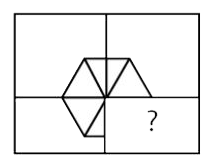Select the correct option of haploid cells from the following groups :
Primary oocyte, Secondary oocyte, Spermatid
Secondary spermatocyte, First polar body, Ovum
Spermatogonia, Primary spermatocyte, Spermatid
Primary spermatocyte, Secondary spermatocyte, Second polar body
The correct Answer is:B
To determine the correct option of haploid cells from the given groups, we need to analyze each option based on the ploidy level of the cells mentioned.
1. Understanding Haploid and Diploid Cells:
- Haploid (n): Cells that contain one set of chromosomes. Examples include gametes (sperm and egg).
- Diploid (2n): Cells that contain two sets of chromosomes. Examples include somatic cells and germ cells like primary oocytes and spermatogonia.
2. Analyzing the Options:
- Option 1: Primary oocyte, secondary oocyte, spermatid.
- Primary oocyte: Diploid (2n)
- Secondary oocyte: Diploid (2n)
- Spermatid: Haploid (n)
- Conclusion: This option is incorrect as it contains diploid cells.
- Option 2: Secondary spermatocyte, 1st polar body, ovum.
- Secondary spermatocyte: Haploid (n)
- 1st polar body: Haploid (n)
- Ovum: Haploid (n)
- Conclusion: This option is correct as all three are haploid cells.
- Option 3: Spermatogonia, primary spermatocyte, spermatid.
- Spermatogonia: Diploid (2n)
- Primary spermatocyte: Diploid (2n)
- Spermatid: Haploid (n)
- Conclusion: This option is incorrect as it contains diploid cells.
- Option 4: Primary spermatocyte, secondary spermatocyte, 2nd polar body.
- Primary spermatocyte: Diploid (2n)
- Secondary spermatocyte: Haploid (n)
- 2nd polar body: Haploid (n)
- Conclusion: This option is incorrect as it contains a diploid cell.
3. Final Conclusion:
- The correct option containing only haploid cells is Option 2: Secondary spermatocyte, 1st polar body, ovum.
- Haploid (n): Cells that contain one set of chromosomes. Examples include gametes (sperm and egg).
- Diploid (2n): Cells that contain two sets of chromosomes. Examples include somatic cells and germ cells like primary oocytes and spermatogonia.
- Option 1: Primary oocyte, secondary oocyte, spermatid.
- Primary oocyte: Diploid (2n)
- Secondary oocyte: Diploid (2n)
- Spermatid: Haploid (n)
- Conclusion: This option is incorrect as it contains diploid cells.
- Secondary spermatocyte: Haploid (n)
- 1st polar body: Haploid (n)
- Ovum: Haploid (n)
- Conclusion: This option is correct as all three are haploid cells.
- Spermatogonia: Diploid (2n)
- Primary spermatocyte: Diploid (2n)
- Spermatid: Haploid (n)
- Conclusion: This option is incorrect as it contains diploid cells.
- Primary spermatocyte: Diploid (2n)
- Secondary spermatocyte: Haploid (n)
- 2nd polar body: Haploid (n)
- Conclusion: This option is incorrect as it contains a diploid cell.
- The correct option containing only haploid cells is Option 2: Secondary spermatocyte, 1st polar body, ovum.
Topper's Solved these Questions
- PRINCIPLES OF INHERITANCE AND VARIATION Book:NEET PREVIOUS YEAR (YEARWISE + CHAPTERWISE)Chapter:PRINCIPLES OF INHERITANCE AND VARIATION Exercise:MCQ
Explore 161 Videos
- REPRODUCTION IN ORGANISMSBook:NEET PREVIOUS YEAR (YEARWISE + CHAPTERWISE)Chapter:REPRODUCTION IN ORGANISMSExercise:Exercise
Explore 19 Videos
Similar Questions
Knowledge Check
Select the correct option from the following
Achristiaan Huygens a contemporary of newton established the wave theory of light by assuming that light waves were transverseBMaxwell provided the compiling theoretical evidence that light is transverse waveCThomas young experimentally proved the way behaviour of light and Huygen's assumptionDall the statements given above correctly answers the question what is lightSelect the correct option to complete the following pattern.
 A
A B
B C
C D
D
Select the correct option to complete the following pattern.
 A
A B
B C
C D
D
Select the correct option to complete the following pattern.

View SolutionSelect the correct option in the following.
View SolutionMatch the following organisms with their response characteristics :

Select the correct option from the following :
View SolutionSelect the correct option for the following graph :

View SolutionSelect the correct statement from the following given options.
View Solution



